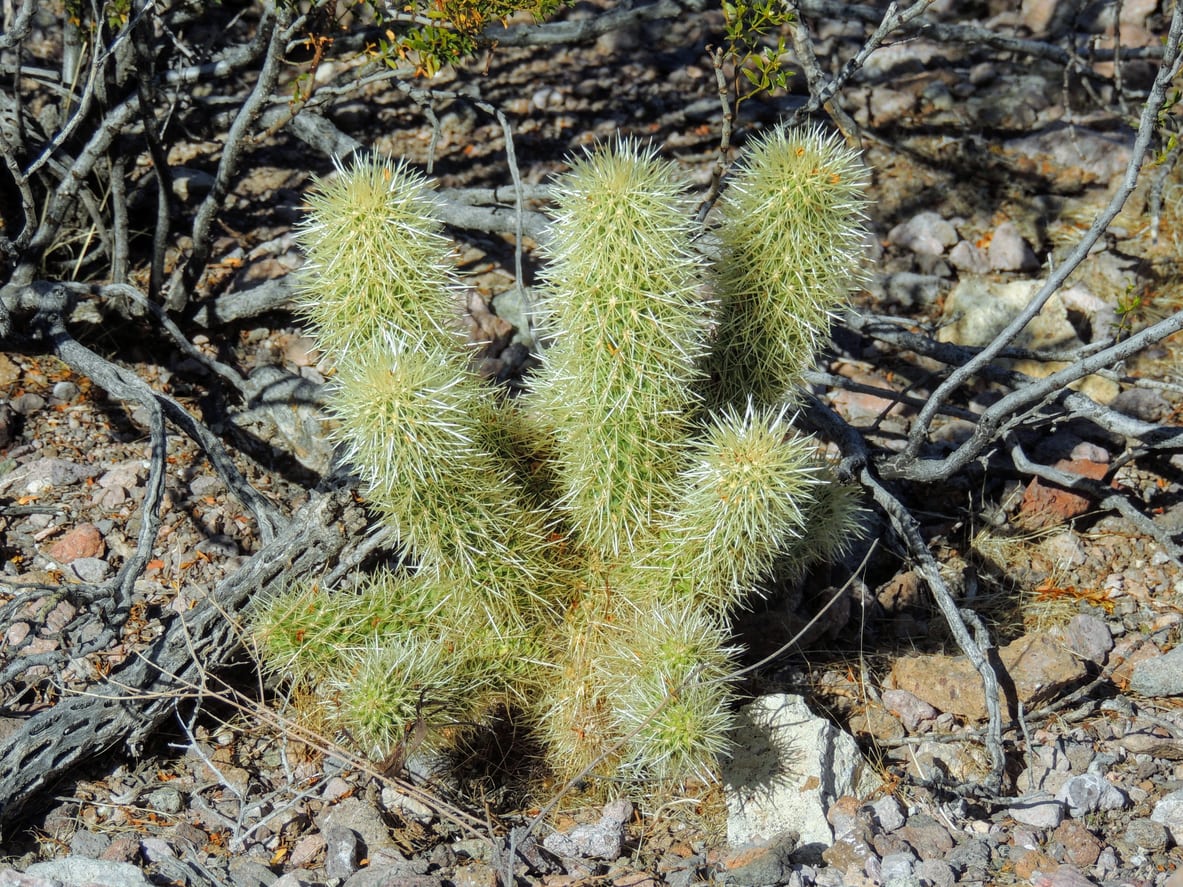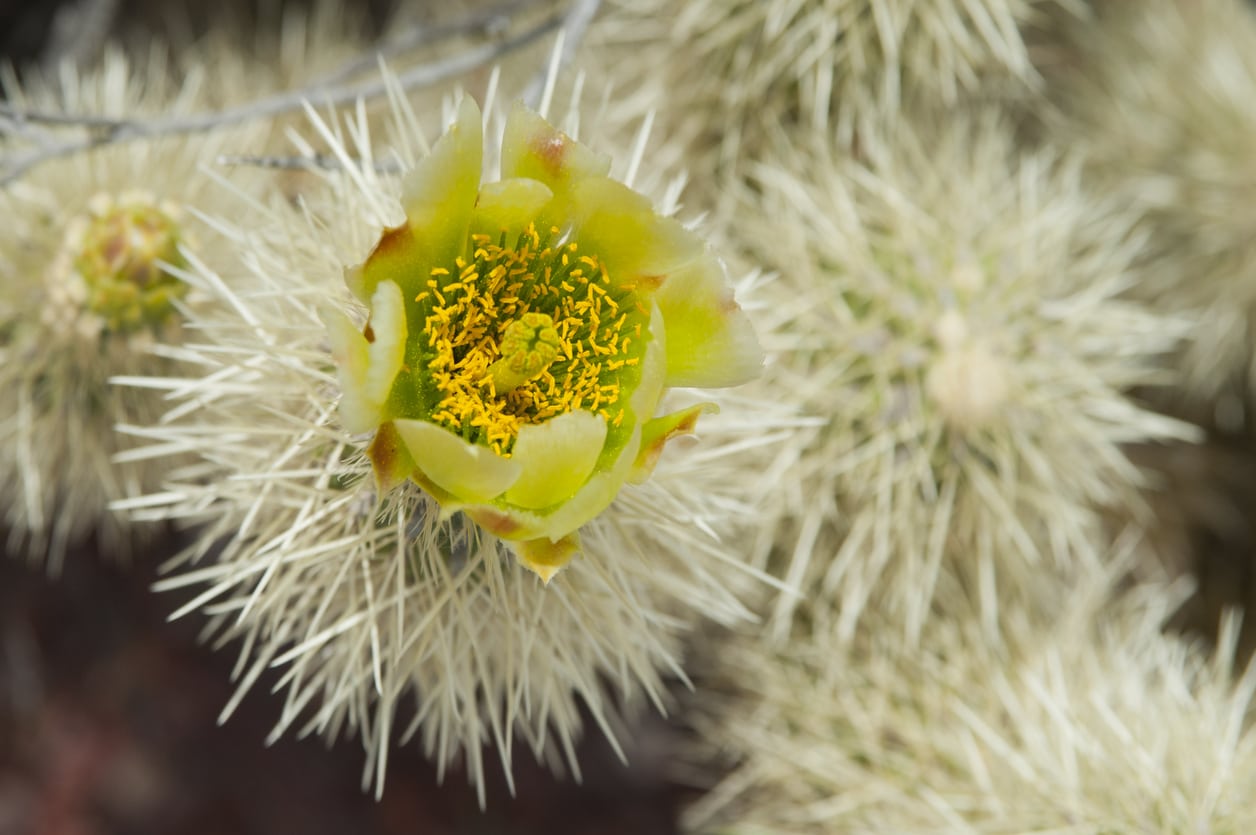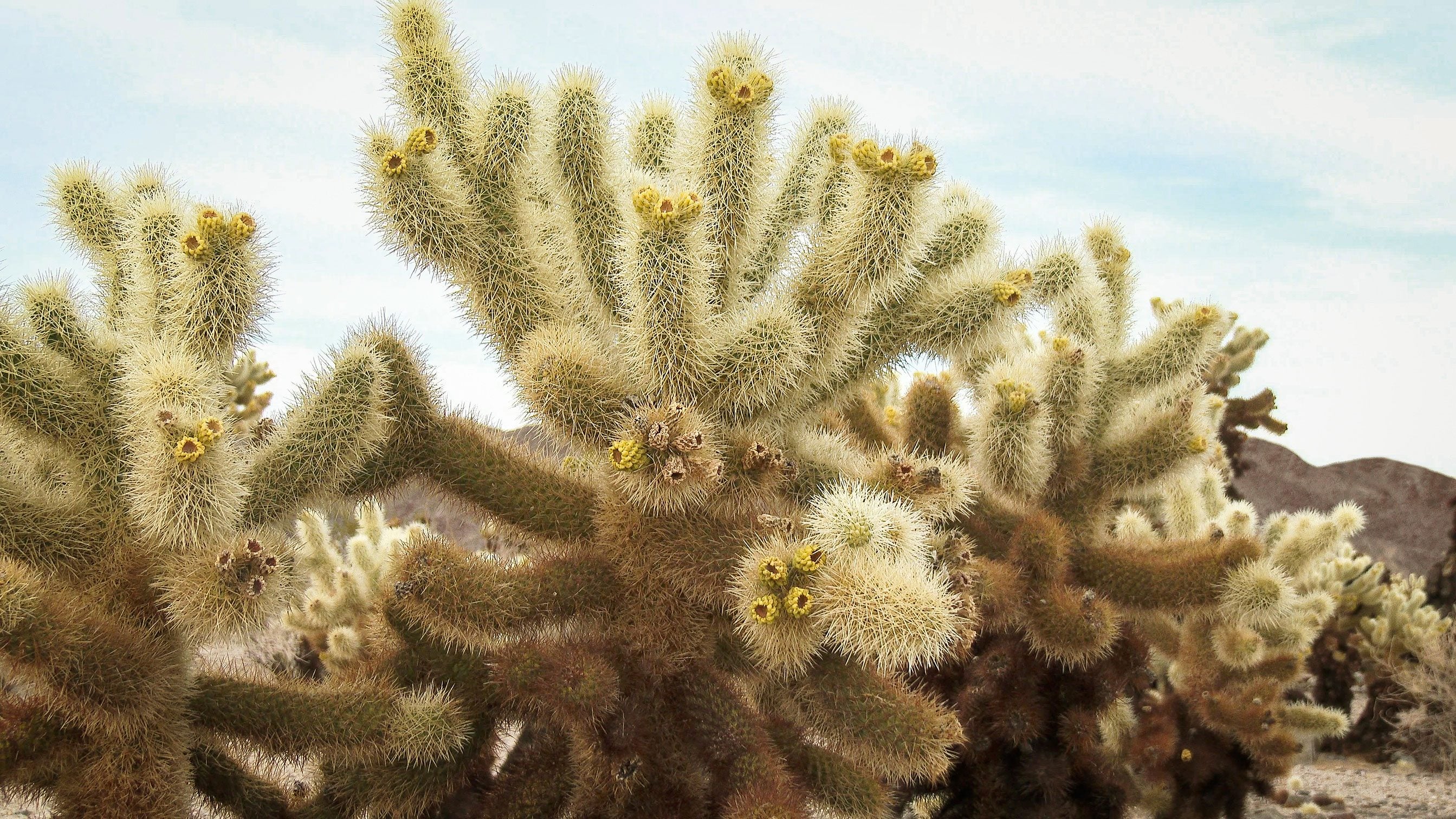Chain Cholla Information – How To Grow A Chain Cholla Cactus


Chain cholla cactus bears two scientific names, Opuntia fulgida and Cylindropuntia fulgida, but it’s known to its fans simply as cholla. It’s native to the southwestern part of the country as well as Mexico. Those living in warmer climates can start growing chain cholla in their backyards. If you’d like a bit more chain cholla information, we’ll also give you tips on how to grow a chain cholla cactus.
Chain Cholla Information
Chain cholla cactus are most often seen growing in their native ranges in the Sonora Desert. The cactus grows to some 10 feet (3 m.) tall, with whorled stem segments. According to chain cholla information, the last segments on a branch break off pretty easily. Many cacti have spines and the chain cholla cactus is no exception. The spines on this cactus are each bundled in a sheath, the color of straw. They form such a dense layer on the chain cholla cactus that it is hard to see the stem.
How to Grow a Chain Cholla
When you want to grow a chain cholla, it’s important to live in one of the warmer hardiness zones. Chain cholla won’t thrive in cool areas. So why grow these cacti? Those growing chain cholla plants enjoy both blossoms, in shades of pink ranging to deep magenta, and gray-green fruit. The cactus is not very colorful, nor is it the most ornamental cactus. However, it is unique in that the fruits just keep coming. The plants keep producing more blossoms which produce more fruit, resulting in a chain of fruits – hence the common name.
Chain Cholla Plant Care
If you are growing chain cholla, plant the cactus in a full sun location. These are desert plants and are not likely to appreciate shade. Chain cholla plant care starts with well-draining soil. Think of how quickly desert sand passes water as you are settling in the chollas. You need soil that doesn’t hold onto water. Speaking of water, as with most cacti, chain cholla cactus only needs occasional irrigation. In the right location, they are easy-care plants that won’t ask much of a gardener.
Gardening tips, videos, info and more delivered right to your inbox!
Sign up for the Gardening Know How newsletter today and receive a free copy of our e-book "How to Grow Delicious Tomatoes".

Teo Spengler is a master gardener and a docent at the San Francisco Botanical Garden, where she hosts public tours. She has studied horticulture and written about nature, trees, plants, and gardening for more than two decades. Her extended family includes some 30 houseplants and hundreds of outdoor plants, including 250 trees, which are her main passion. Spengler currently splits her life between San Francisco and the French Basque Country, though she was raised in Alaska, giving her experience of gardening in a range of climates.
-
 Get Ready For A Summer Of Hummers! Grow These Full Sun Hummingbird Plants and Flowers
Get Ready For A Summer Of Hummers! Grow These Full Sun Hummingbird Plants and FlowersIf you’re lucky enough to enjoy a sunny backyard, make sure you are maxing out on your pollinator opportunities and grow these full sun hummingbird plants and flowers
By Tonya Barnett
-
 12 Lush Alternatives To A Lawn For Sustainable Spaces
12 Lush Alternatives To A Lawn For Sustainable SpacesAlternatives to a lawn are beautiful and also beneficial to your local ecosystem and its pollinators. Explore our top picks for plants to replace grass.
By Tonya Barnett
-
 Jumping Cholla Care Guide – Learn How To Grow Jumping Cholla Cacti
Jumping Cholla Care Guide – Learn How To Grow Jumping Cholla CactiAn attractive but rather odd-looking cactus, the teddy bear cholla or jumping cholla is accustomed to desert-like conditions and is suitable for growing in USDA plant hardiness zone 8 and above. If you can provide what it needs, then this article can help with its care.
By Mary H. Dyer
-
 Walking Stick Cholla Info: Tips On Caring For Walking Stick Chollas
Walking Stick Cholla Info: Tips On Caring For Walking Stick ChollasAmong the varied forms of cactus, the walking stick cholla possesses one of the more unique characteristics. Learn how to grow walking stick plants and add this unique specimen to your cactus garden. Click this article for additional information.
By Bonnie L. Grant
-
 Cholla Cactus Care: Tips For Growing Cholla Cactus
Cholla Cactus Care: Tips For Growing Cholla CactusCholla is a jointed cactus in the Opuntia family, which includes prickly pears. In spite of the barbs, the plant makes an excellent addition to a southwest style garden. In this article, you'll find tips on how to grow a Cholla cactus plant.
By Bonnie L. Grant